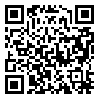BibTeX | RIS | EndNote | Medlars | ProCite | Reference Manager | RefWorks
Send citation to:
URL: http://irj.uswr.ac.ir/article-1-204-fa.html
Objectives: There are some controversies about the value of modified Ashworth Scale (MAS) for assessing spasticity. The goal of this study was to investigate if there is any correlation between scores obtained from MAS for wrist spasticity and electrophysiological recordings as the objective measure of spasticity.
Methods: In this cross-sectional study, 34 stroke patients were employed. Wrist spasticity was clinically measured by means of MAS. Also, an electromyogram (EMG) machine was used to elicit Hmax and Mmax from the flexor carpi radialis muscle. Spearman’s correlation coefficient test was used to investigate potential correlation between clinically and electrophysiologically measures of spasticity.
Results: The observed relation between MAS and EMG recordings was not statistically significant (rho=0.183, P>0.05).
Discussion: Our findings suggest that MAS may be a useful tool for grading hypertonia, but it is not a valid measure of spasticity in selected patients.
دریافت: 1389/10/16 | پذیرش: 1389/12/1 | انتشار: 1390/1/12
| بازنشر اطلاعات | |
 |
این مقاله تحت شرایط Creative Commons Attribution-NonCommercial 4.0 International License قابل بازنشر است. |



